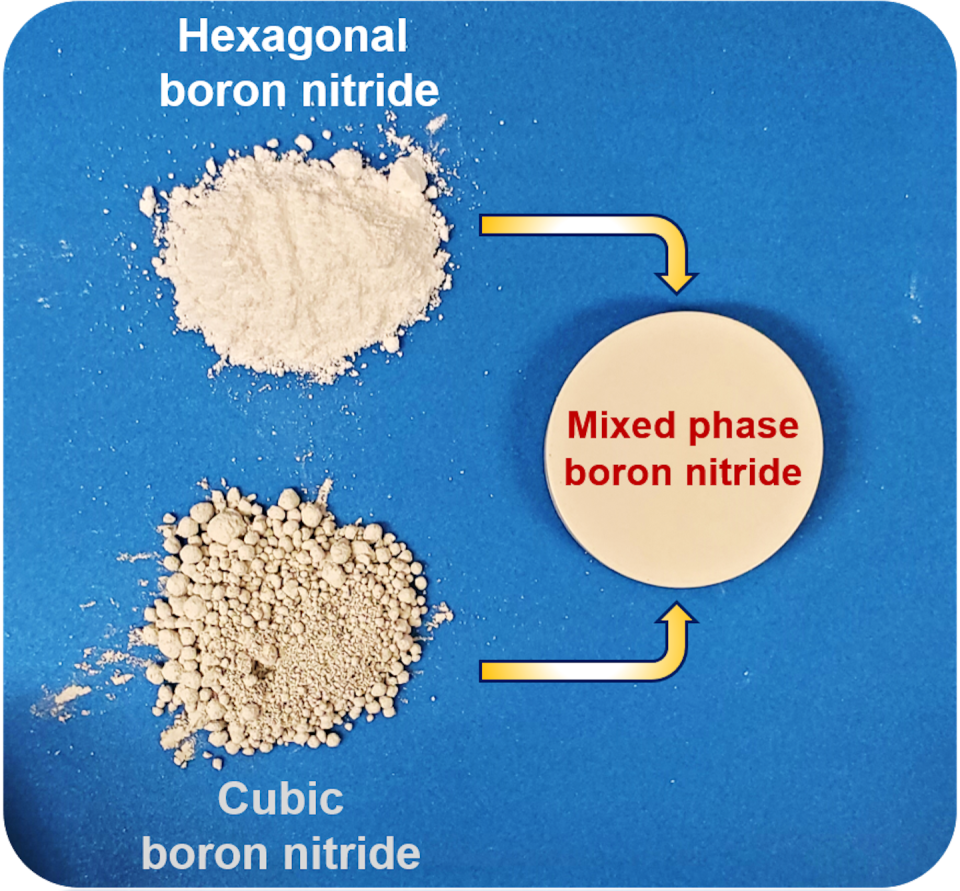In chemistry, structure is everything. Compounds with the same chemical formula can have different properties depending on the arrangement of the molecules they are made of. And compounds with a different chemical formula but a similar molecular arrangement can have similar properties.
Graphene and a form of boron nitride called hexagonal boron nitride fall into the latter group. Graphene consists of carbon atoms. Boron nitride, BN, is composed of boron and nitrogen atoms. Although their chemical formulas differ, they have a similar structure – so similar that many chemists call hexagonal boron nitride “white graphene.”
Carbon-based graphene has many useful properties. It is thin but strong and conducts heat and electricity very well, making it ideal for use in electronics.
Likewise, hexagonal boron nitride has a host of properties similar to graphene that could improve biomedical imaging and drug delivery, as well as computers, smartphones and LEDs. Researchers have studied this type of boron nitride for years.
But hexagonal boron nitride is not the only useful form in which this compound occurs.
As materials engineers, our research team has been investigating another type of boron nitride, called cubic boron nitride. We want to know if combining the properties of hexagonal boron nitride with cubic boron nitride could open the door to even more useful applications.
Hexagonal vs cubic
Hexagonal boron nitride is, as you might guess, boron nitride molecules arranged in the shape of a flat hexagon. It looks honeycomb-shaped, like graphene. Cubic boron nitride has a three-dimensional lattice structure and looks like a diamond at the molecular level.
H-BN is thin, soft and is used in cosmetics to give them a silky texture. It does not melt or degrade even under extreme heat, making it useful in electronics and other applications. Some scientists predict it could be used to build a radiation shield for spacecraft.
C-BN is hard and resistant. It is used in manufacturing to make cutting tools and drills, and it can maintain its sharp edge even at high temperatures. It can also help dissipate heat in electronics.
Although h-BN and c-BN may seem different, our research has shown that together they have even more potential than either alone.

Both types of boron nitride conduct heat and can provide electrical insulation, but one, h-BN, is soft and the other, c-BN, is hard. So we wanted to see if they could be used together to create materials with interesting properties.
For example, combining their different behaviors could make a coating material effective for high-temperature structural applications. C-BN can provide strong adhesion to a surface, while the lubricating properties of h-BN can resist wear and tear. Both together would ensure that the material does not overheat.
Making boron nitride
This class of materials does not occur naturally, so scientists must create it in the laboratory. In general, high-quality c-BN has been difficult to synthesize, while h-BN is relatively easier to make as high-quality films, using so-called vapor phase deposition methods.
With vapor phase deposition we heat boron and nitrogen containing materials until they evaporate. The vaporized molecules are then deposited on a surface, cool, bond together and form a thin film of BN.
Our research team has been working on combining h-BN and c-BN using similar processes to vapor phase deposition, but we can also mix powders of the two together. The idea is to build a material with the right mix of h-BN and c-BN for thermal, mechanical and electronic properties that we can fine-tune.
Our team discovered that the compound substance, made by combining both forms of BN, has a variety of potential applications. When you point a laser beam at the fabric, it flashes brightly. Researchers could use this property to create displays and improve radiation therapies in the medical field.
We also discovered that we can adjust how thermally conductive the composite material is. This means engineers can use this BN composite in machines that manage heat. The next step is to attempt to fabricate large slabs made from an h-BN and c-BN composite. If we do this accurately, we can tailor the mechanical, thermal and optical properties to specific applications.
In electronics, h-BN could act as a dielectric (or insulator) alongside graphene in certain low-power electronics. As a dielectric, h-BN would help electronics work efficiently and maintain their charge.
C-BN could work with diamond to create ultra-wide bandgap materials that would allow electronic devices to operate at much higher power. Diamond and c-BN both conduct heat well, and together they could help cool these powerful devices that generate a lot of extra heat.
H-BN and c-BN individually could lead to electronics that perform exceptionally well in different contexts – together they also have a wide range of potential applications.
Our BN composite could improve heat spreaders and insulators, and it could work in energy storage machines such as supercapacitors, which are fast-charging energy storage devices, and rechargeable batteries.
We continue to study the properties of BN and how we can use it in lubricants, coatings and wear-resistant surfaces. Developing ways to scale up production will be key to exploring its applications, from materials science to electronics and even environmental sciences.
This article is republished from The Conversation, a nonprofit, independent news organization providing facts and analysis to help you understand our complex world.
It was written by: Pulickel Ajayan, Rice University and Abhijit Biswas, Rice University.
Read more:
Pulickel Ajayan receives funding from the Army Research Laboratory and the Army Research Office.
Abhijit Biswas does not work for, consult with, own shares in, or receive funding from any company or organization that would benefit from this article, and has disclosed no relevant affiliations beyond their academic appointment.